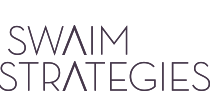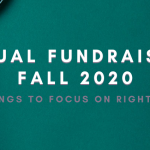How To Identify Major Donors Using Wealth Screening Tools
As a nonprofit professional, you know that major donors are some of the most important people to your cause. According to fundraising research, 76% of gifts come from just 3% of donors— your major donors.
With the current global pandemic warranting social distancing guidelines and forcing organizations to put a pause on in-person events, many nonprofits are scrambling to figure out the next best steps and fill the gaps in their fundraising revenue. A larger focus on major donors is one of the ways that nonprofits are staying afloat.
One of the best and most effective methods for identifying your major donors is with wealth screening tools, but not every nonprofit knows to take full advantage of them.
Chances are, you already know that you want to increase your major donor fundraising efforts, but you might not know how to effectively accomplish this. By exploring what exactly wealth screening is and how accessible the tools are, you can better understand how to find your major donors and engage with them. In this guide, we’ll be answering the following questions:
- What is wealth screening and how do you use it?
- What data points should you screen for?
- What are wealth screening best practices?
- How else can you increase fundraising with wealth screening?
Wealth screening is a method that you can use to maximize your fundraising in other ways than just identifying major donors. It’s important that you understand what it is in order to use it to its full potential. Let’s begin.
According to DonorSearch, wealth screening is a powerful tool that fundraisers use to identify a donor’s giving capacity. It is a subset of prospect research, a popular way for nonprofits to learn more about their donors and identify those who can make a large impact. Many people use wealth screening to pinpoint their potential major donors. After all, those with higher wealth metrics should have a larger capacity to give.
To perform wealth screening, you have to screen each of your donors for certain traits (which we’ll discuss in the next section). These data points can help determine a donor’s:
- Capacity to give
- Likelihood of donating
- Relationships to other prospects
These screenings utilize existing data, so it’s important that your fundraising software integrates with your constituent relationship management (CRM) system. This way, you know that each of your donors has a profile full of data from all fundraising engagements.
While you may think wealth screening your donors manually is feasible, in reality, it’s a long and arduous process. To effectively screen your donors and identify those who can make a large impact, you should invest in a dedicated tool. The best wealth screening tools will allow you to screen all of your donors at once or in large batches, comparing key data against their larger philanthropic database.
In order to conduct a comprehensive wealth screening on your donor base and identify your major givers, you need to be looking for philanthropic indicators in addition to wealth markers. While it’s important to approximate a donor’s wealth profile for major gifts, you can’t forget the qualities that make the donor inclined to make that gift.
Put simply, your prospective major donors need both the capacity to give as well as the affinity to give. To better understand how you determine those qualities, let’s dive into the exact data points you should gather in a wealth screening:
-
- Wealth markers are signs of someone’s financial capacity to give. Common examples of these include real estate ownership, stock ownership, and business affiliations. Those who own large properties and invest in successful stocks are much more likely to have the financial stability to make a large gift. Further, business affiliations can give you a clue into the donor’s job position and who their employer is.
- Philanthropic indicators are signs of someone’s affinity to give. Common examples of these include past giving, nonprofit involvement, and political giving. Past giving and nonprofit involvement are some of the top ways to see if someone is charitably inclined. If they’ve made substantial contributions before or are even a board member of a nonprofit, those are huge indicators for a high affinity to give.
Most wealth screenings only account for the wealth markers of a donor, but that can result in an incomplete picture of your prospect. If they’ve made no indication of being philanthropically involved in the past, it’s less likely that they’ll give to your organization in the first place, let alone make a major donation. Your best bet is to find a tool that screens both wealth and philanthropic indicators.
Before you invest in a wealth screening tool and plan your major donor fundraising strategy, there are a couple of best practices to keep in mind. An effective wealth screening on your donors takes time to prepare, and it won’t do much use if you go into it without having a game plan.
If you’re thinking of using wealth screening to identify your major donors, make sure you follow these best practices:
- Start with a clean database. According to AccuData’s article on data hygiene, it’s common for nonprofit databases to have duplicate entries or incorrect information. However, this can negatively affect your wealth screening results and may even cause you to overlook prospects. To combat this, ensure that your fundraising tools are integrated with your CRM. This way, you can keep track of who has been active, ensure donor contact information is accurate, determine each donor’s average gift amount, and get rid of duplicate information. For a more comprehensive system cleanup, consider getting an audit.
- Screen your donors in segments. It can be overwhelming to screen your entire donor base at once, especially if you find yourself with a large number of prospects. Consider segmenting your screenings into categories. This makes the entire process more efficient and can help create more targeted results. You can segment your donor base by recurring donors, first-time donors, lapsed donors, and past event attendees. This also clues you into the best way to approach each major donor prospect! After all, you wouldn’t communicate with a recurring donor the same way you would a lapsed donor.
- Confirm wealth screening results. It can be exciting to finish up your wealth screening and find yourself with a list of prospective major donors. However, that doesn’t mean you should rush to contact them and solicit a gift. As you review each prospect’s profile, double-check their data. Wrong data points will throw your strategy off, so it’s crucial to catch any mistakes before reaching out.
- Prioritize philanthropic indicators. As mentioned earlier, a successful wealth screening tool doesn’t just measure for wealth markers. To best determine your prospective major donors, screening for philanthropic indicators is just as important! Make sure your wealth screening tool can do both for more comprehensive and accurate results.
With these best practices in mind, you can more confidently go into your wealth screening and know that you’re getting the top results. Once you have your list of prospective major donors, you can begin cultivating those relationships and encouraging major gifts.
Keep in mind that due to the current economic climate and the global pandemic affecting all areas of life, your prospective major donors might not be in the best financial place to make any type of gift at all. It might be worth it to rethink your current major donor engagement strategy and focus less on acquiring that gift and more on growing that relationship.
This way, when they do have the finances, your organization is at the top of their mind. If a donor does make a major contribution during this time, make sure to thank them heavily. This might require more than sending a simple acknowledgment letter. Instead, consider making a personal phone call or even hosting an event dedicated to your major donors.
Your wealth screening tool can do more than just help you identify your major donor prospects. In fact, when used correctly, you can increase your fundraising in many ways.
There are several different ways you can utilize your wealth screening tool and data to optimize your outreach efforts and maximize all fundraising opportunities, such as:
- Determine matching gift eligibility. Corporate matching gifts are one of the top ways that nonprofits can increase their fundraising, but it isn’t utilized as often as it should be. According to this article, an estimated $4-$7 billion in matching gifts funds goes unclaimed each year. Using your wealth screening tool, you can easily identify your donors’ business affiliations, and thus their employers. For those who are eligible, make sure to send them the appropriate email letting them know about the opportunity as well as the steps to submit the matching gift.
- Provide realistic suggested giving amounts on your donation form. Not every donor is able to make a major gift to your organization, no matter how much they want to. By performing a wealth screening on your previous donors, you can get a better idea of the average gift amount and the types of supporters who give them. This way, when you provide suggested giving amounts on your donation forms, you have a more realistic understanding of what to ask and expect.
- Tailor your direct asks. Oftentimes, you might find yourself making a direct gift ask to a loyal supporter. With your wealth screening results, you have a clearer understanding of each donor’s capacity to give and insight into how to design their fundraising asks. Customizing the ask amount to each donor increases the chance that they’ll make a gift!
As you can see, wealth screening can help optimize a number of your fundraising efforts. From discovering new opportunities in matching gifts to determining a realistic amount for fundraising goals, wealth screening is sure to maximize your nonprofit success.
Having a dedicated tool to identify your major donor prospects is important, especially if you want to cultivate that relationship early on. This way, as you develop your donor engagements, you know which prospects to prioritize. Hopefully, this guide has given you insight into the best ways to approach wealth screening and how you can leverage that data successfully. Good luck!
Sarah Tedesco is the Executive Vice President of DonorSearch, a prospect research and wealth screening company that focuses on proven philanthropy. Sarah is responsible for managing the production and customer support department concerning client contract fulfillment, increasing retention rate and customer satisfaction. She collaborates with other team members on a variety of issues including sales, marketing and product development ideas.











